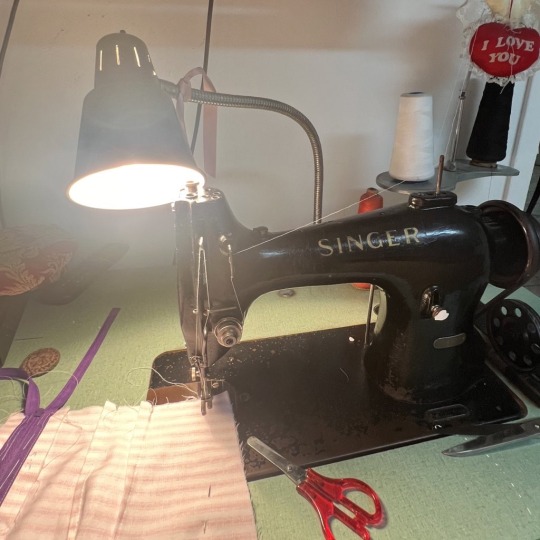#vintage singer
Text
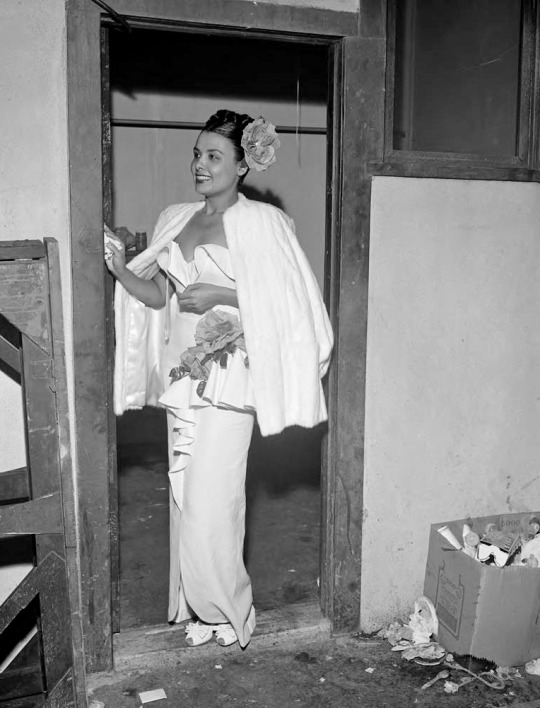
Lena Horne backstage at the Hollywood Bowl, 1946.
422 notes
·
View notes
Text

Billie Holiday and Ella Fitzgerald 1958
17 notes
·
View notes
Text

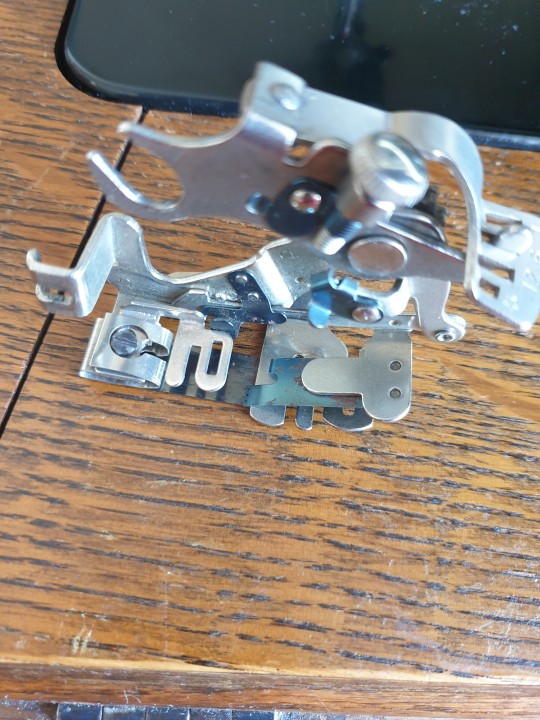
Tragedy!
Halfway through 9 meters of ruffles my ruffle attachment broke 😭
The little bit that pushed the pleat somehow got under the needle and it broke. I don't know how that is possible. Now it drops pleats🥲
#i thought it was just a broken needle#i can't even find the piece that broke off#i doubt i can find someone able to repair just that bit#but if I'm lucky i can find a new old attachment#vintage singer#antique sewing machine#treadle machine#it's a 1926 singer#the pretty one with the sphinxes#a talia original#talia's adventures in dressmaking#excerpts from my life#sewing#and i was enjoying using my old machine again so much#tragedy indeed
31 notes
·
View notes
Text
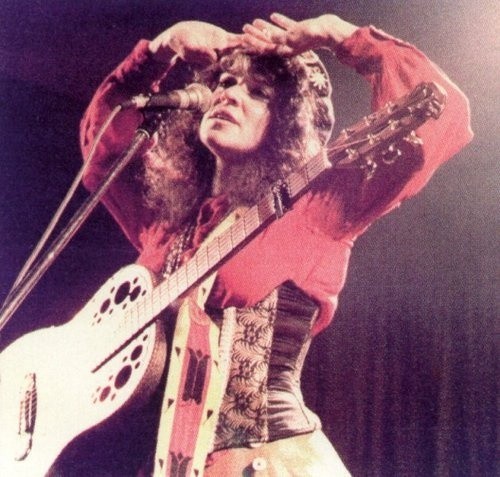
RIP Melanie Safka, legendary singer.
11 notes
·
View notes
Text
Vintage sewing machines are very much an "if you give a mouse a cookie" scenario.
I just ordered 60 feet of music wire to recreate ONE broken spring on my Singer 66's bobbin winder. Because I cannot find a replacement for it anywhere on the wide wide internet, despite knowing the part number.
...Anyone else need a spring? Like....ever?
9 notes
·
View notes
Text
I get now why sewists start accumulating more sewing machines after they’ve been sewing for a while. I’m a little too wary to try sewing on my machine right now because I think I desperately need to change the motor lest I risk starting a fire. It’s a vintage machine that I’m pretty sure was made in ‘63 (it was my grandma’s originally and then given to me by my mother!) and it is absolutely still the original motor and this baby gets HOT but I am inspired to do so many projects right now and if I had another sewing machine I could still do them. Alas I must order a new motor and wait for it to come in the mail
#personal#sewing#fibre arts#vintage singer#but honestly with a new motor and belt this baby will be practically brand new#singer 237 fashion mate#I’m pretty sure this was either the last or one of the last all metal inside singers!!#if I take good care of it with cleaning and oiling this thing could easily outlast me#I mean it was sitting in storage at my mothers house for who knows how many decades#I had never seen it in my life until she gave it to me so put away since before I was born#and I haven’t had a single problem with it until now but that’s more to do with really old electrical#and so easy to fix with the external motors#if anybody has some recommendations for a good external motor lmk#there are so many options on ebay and I bet a bunch of them are junk but I’m sure there are some good ones out there
2 notes
·
View notes
Text




I opened up the foot pedals for the two vintage sewing machines to get the crud & dust out, & see if the wiring looked suspicious, and was surprised to find they are completely different on the inside. Top goes to the Japanese-made, older (early 50s), simpler machine, while bottom is the space-age Singer ('61, model 500A).
The top one swings that bar across a series of, I guess, connection points, when you press the pedal, so I imagine it'll do discrete speeds. The block it's all set in is damaged in a couple places, so I suspect the milk cap (Borden's; it has the cow on top) is structurally necessary to keep everything in place.
The lower one seems like it'll produce an unbroken gradation of speeds, since pressing the pedal mechanism moves that center bit smoothly towards the two copper plates. It never actually touches them, though, and I have no idea how it would work. There's a screw on the other end of the yellow block, so it can probably be opened up to look inside, but when I loosened it I got the impression things were gonna fall out or get misaligned or something, so it's still a mystery (for now).
Another fascinating subject to research! I really want to understand how these work, because it'll be useful but also/mainly because it'll be fun. Their basic function must be to regulate how much electricity gets from the wall socket to the motor in the machine*, but both just what "how much electricity" means (ie which measurement, is it how many electricities there are, or how hard you push them) and how exactly they control it are things I'll have to wrap my head around.
I'm gonna take the modern Brother machine's foot pedal apart, too, to see what it's like.
*The motor then turns the electricity into rotation, in a process that I understand maybe 30%. There are magnets involved, and when I asked J how the magnets/electromagnets do what they do in there, like why they have that effect, he said that was getting into the fundamental physics of the universe, so I decided to just accept it for now.
The rotation runs the whole machine, being very cleverly turned into assorted finely-calibrated motions through a series of shafts & joints. The newer machine also has a few gears, and an ingenious stack of cams, so it can do a lot more motions.
Also did you know that a motor and a generator are the same thing, just in reverse? When you buy one, it's designed to conveniently do one thing or the other, but they really can function either way around. Rotate a motor by hand, and you're producing electricity. A gas generator, like we've been running our well pump on for two days, turns explosions into rotation, and that rotation into electricity. You could also put electricity into it, and it would produce rotation, which you could theoretically attach something to, and use that mechanical energy. Your car engine does pretty much the same thing, using the rotation to run some parts directly, and the electricity for others.
#i just like learning shit#got on a tear about 1830s fashion the other day#i understand it well enough now to answer the question about theatrical costume design i had#sewing machine repair#magnets - how do they work#vintage singer#old sewing machines#diy
7 notes
·
View notes
Text
Footage my machine repair lady sent me yesterday! I'm so excited to get it back! It's almost done but I should be able to get it after labor day
2 notes
·
View notes
Text

It's November 15th. 🎂 On this day in 1932, the soon-to-be world famous, multi-lingual, multi-talented Petula Sally Olwen Clark was born in Ewell, England. Her show business career began early, at the age of nine, when "Pet" made her first of over 500 radio appearances on BBC, singing for families of British soldiers during World War II.
When she turned 12, Pet appeared in her first film. She's since appeared in over 25 movies, starring alongside such stars as Kay Kendall in "London Town," Peter Ustinov in "Vice-Versa,” Alec Guinness in "The Card,” Fred Astaire in "Finian's Rainbow,” Peter O'Toole in “Goodbye, Mr. Chips,” and more.
Pet began her recording career at the age of 17. This phase of her show business career also got off to a strong start and ended up being the most successful chapter of her show business career. During the 50s and early 60s, she sold more than 20 million records in the UK and Europe (Including #1 hits in English, French, German, and Italian). When she released her "Downtown" single in the US, though, in 1964, she became a superstar on both sides of the Atlantic. The hits just kept coming, too – "I Know a Place," "My Love," "A Sign of the Times," I Couldn't Live without Your Love," and many more. She also sang her hits on many TV shows during this period.
From the 70s on, Pet continued to sing, perform, act, and host on TV. In 1998, in recognition of Pet's lifetime achievements and service, Queen Elizabeth II anointed her a Commander of the Order of the British Empire (CBE). Pet didn't rest on her laurels, though. She continues to be a relevant force within the entertainment industry. She's currently playing the Bird Woman in a "Mary Poppins" stage production in London's West End. Unbelievable! What a life! ☮️ Peace… Jamiese of Pixoplanet
#Jamiese#Pixoplanet#petula clark#cilla black#lulu#sandie shaw#vinyl#cilla black tribute#dusty springfield#dusty tribute#lulu tribute#witham public hall#vintage singer#downtown#music#step inside the#whats on in essex#life of Petula clark#art#artist#born in the wrong decade#born in the wrong era#paul heaton#vintage#newflag#the housemartins#blancmange#out of darkness#claudia brucken#radio
3 notes
·
View notes
Text

‘Sketch for Eros and Psyche’ by John Singer Sargent, c. 1917-21.
#john singer sargent#sketch#drawing#study#vintage art#classic art#art#art history#old art#art details#vintage
3K notes
·
View notes
Text

Josephine Baker
French postcard. Photo: Roger Viollet. Caption: Josephine Baker (1906-1975) American music-hall artist, May 1926.
2K notes
·
View notes
Text

I am stressed and tired and working too much so I just spent two hours on a sundress.
Hopefully I’ll finish it this weekend.
1 note
·
View note
Text
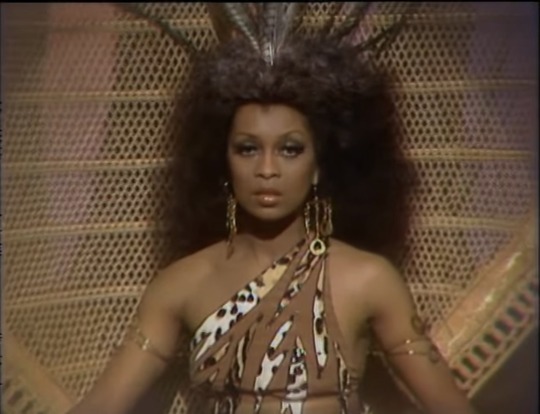

The Lola Falana Show
#lola falana#dancer#actress#singer#legendary#fashion#black girl beauty#beautiful#black woman#1970s nostalgia#beauty face#70s makeup#70s vintage#black is beautiful#entertainment#black culture#vintage#black beauty#black icons
1K notes
·
View notes
Text
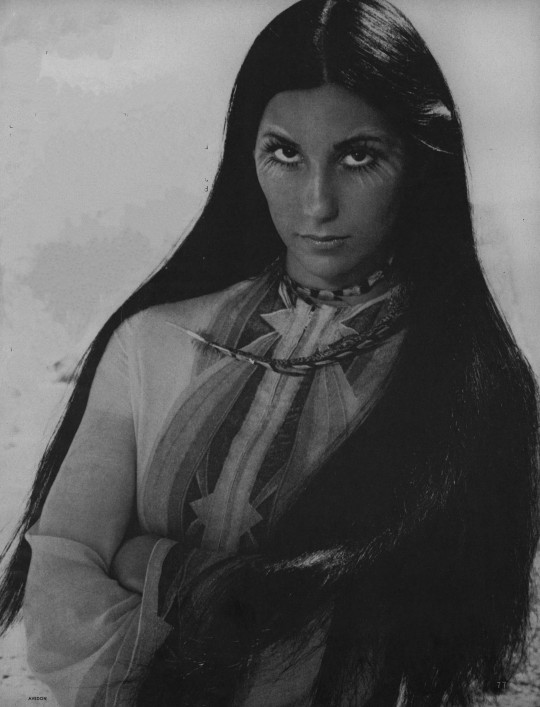
Richard Avedon - Cher (Vogue 1970)
#richard avedon#cher#vogue#photography#fashion photography#vintage fashion#vintage style#vintage#retro#aesthetic#beauty#seventies#70s#70s fashion#70s style#1970s#1970s fashion#editorial#singer
892 notes
·
View notes
